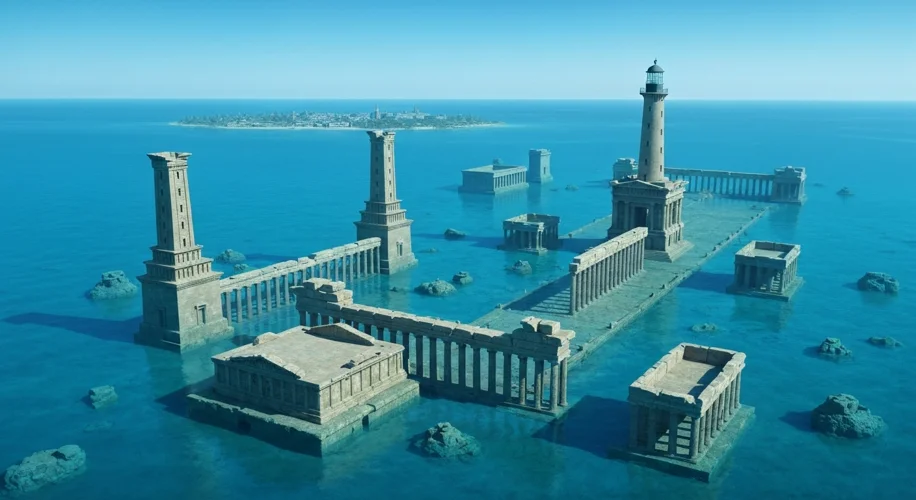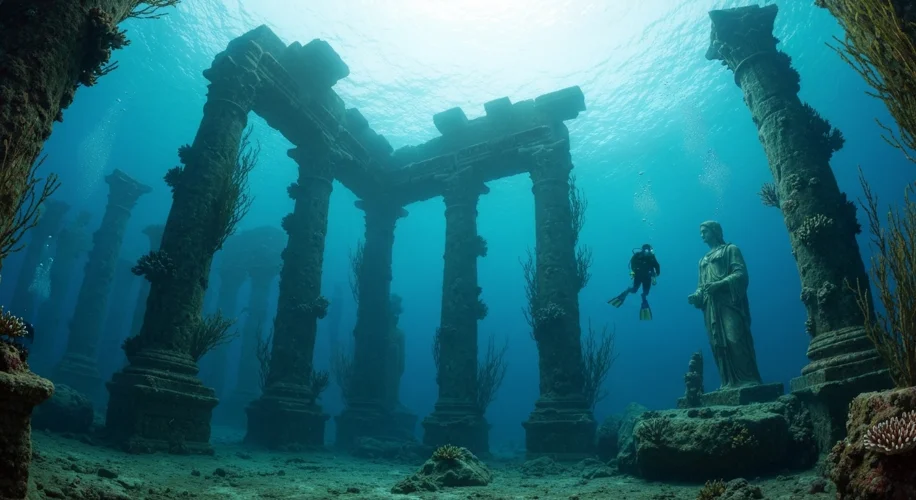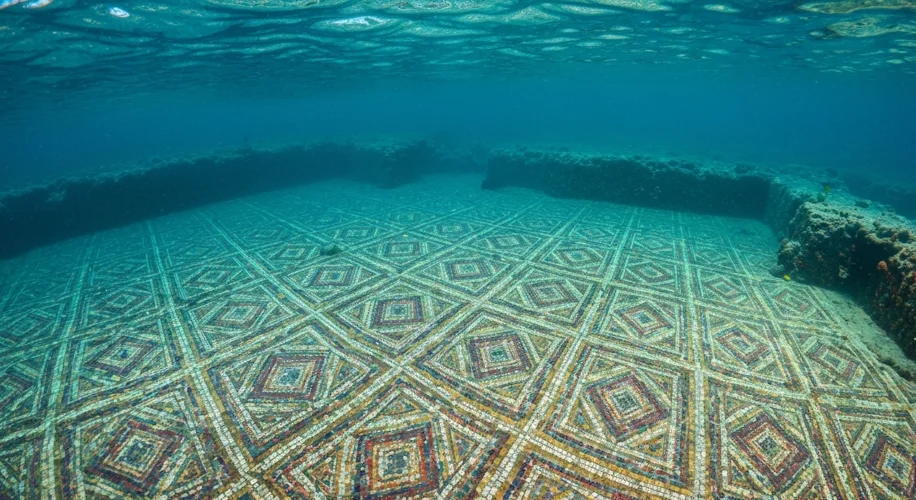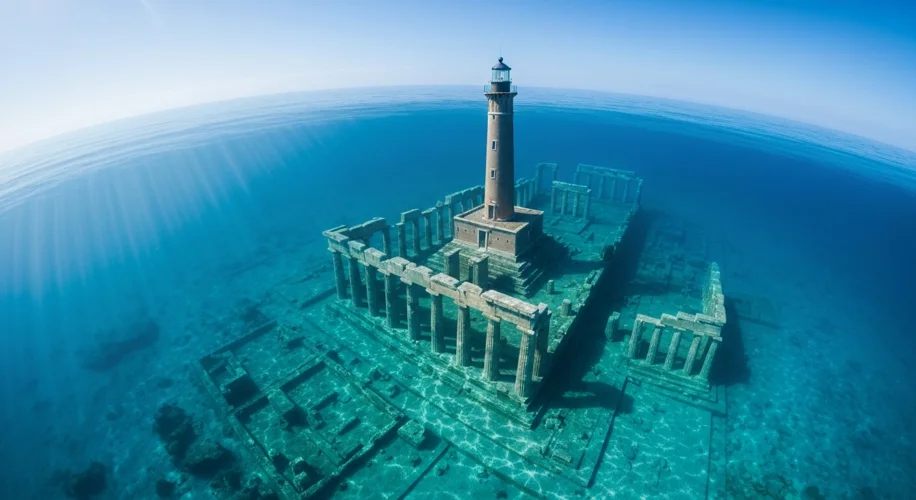The Mediterranean Sea, a cradle of civilizations, holds countless secrets beneath its shimmering surface. But few are as poignant, as evocative, as the submerged remains of Alexandria, Egypt. For centuries, this legendary city, a jewel of the ancient world, has been slowly surrendering its grandeur to the embrace of the waves, leaving behind an underwater testament to a vibrant past.
Alexandria was not merely a city; it was an idea, a beacon of Hellenistic culture and intellectual ambition. Founded by the one and only Alexander the Great in 331 BCE, it was envisioned as a new nexus of power and learning. His successor, Ptolemy I Soter, and subsequent Ptolemaic rulers transformed this vision into reality. They transformed Alexandria into a cosmopolitan metropolis, a bustling hub where Greek, Egyptian, Jewish, and Roman cultures converged. At its heart lay the legendary Pharos of Alexandria, one of the Seven Wonders of the Ancient World, and the Great Library, a repository of an estimated 40,000 to 400,000 scrolls, a true wonder of the ancient intellectual world.

But the very forces that built Alexandria also contributed to its gradual demise. Earthquakes, seismic shifts, and the relentless erosion of the sea began to take their toll. The city, built on a low-lying peninsula, was particularly vulnerable. Major seismic events, particularly a devastating earthquake in 365 CE, are believed to have triggered massive tsunamis, causing significant portions of the city to collapse into the sea. Subsequent centuries saw further geological instability and rising sea levels, gradually inundating vast areas of this once-proud metropolis.
The key actors in Alexandria’s story are as varied as its populace. From the strategic brilliance of Alexander the Great to the intellectual fervor of scholars like Euclid and Archimedes, and the political machinations of Cleopatra VII, the city was a stage for monumental human endeavors. Yet, the true protagonists of its sunken story are the countless ordinary citizens – the merchants, artisans, scholars, and families – whose lives unfolded within its walls, their memories now preserved in stone and mosaic beneath the waves.
The archaeological exploration of Alexandria’s underwater ruins began in earnest in the mid-20th century, propelled by the efforts of figures like French diver Jacques Cousteau. His expeditions in the 1960s brought to light astonishing finds: the remnants of palaces, temples, statues, and even sections of the ancient harbor. These discoveries painted a vivid picture of urban life, revealing intricate street plans, public buildings, and the sheer scale of Ptolemaic and Roman architecture. We see the ghostly outlines of the royal quarter, submerged harbors with quays and shipwrecks, and the scattered remains of statues and columns, silent witnesses to a vanished era.

The impact of Alexandria’s submersion is multifaceted. On one hand, it represents an immense loss of historical and cultural heritage. The Great Library, the Pharos, and countless other structures and artifacts are gone, swallowed by the sea. Yet, paradoxically, the very act of sinking has also preserved a unique snapshot of ancient urban life. The anaerobic conditions at the seabed have protected artifacts from decay in ways that terrestrial archaeological sites rarely experience.
The ongoing research and exploration of sunken Alexandria continue to reveal new insights. Underwater archaeologists meticulously map the submerged city, using advanced sonar and robotic technology to document its layout and recover artifacts. Each recovered amphora, each sculpted fragment, adds another piece to the puzzle of this lost world. It is a constant dialogue between the past and the present, a reminder of the impermanence of even the greatest human achievements.

Ultimately, the sunken city of Alexandria serves as a profound metaphor for the ebb and flow of history. It is a testament to human ambition, creativity, and resilience, but also a stark reminder of the powerful, indifferent forces of nature. As we gaze upon the images and hear the tales of this submerged metropolis, we are transported back in time, walking the streets that are now silent avenues for marine life, standing in awe of a civilization that continues to whisper its stories from the depths.
The legacy of Alexandria is not confined to its physical remnants. It lives on in the foundations of Western thought, in the scientific and philosophical traditions it fostered, and in the enduring human quest for knowledge and beauty that it so magnificently embodied. The city may have sunk, but its echoes resonate through time, a siren song from the depths of history.

